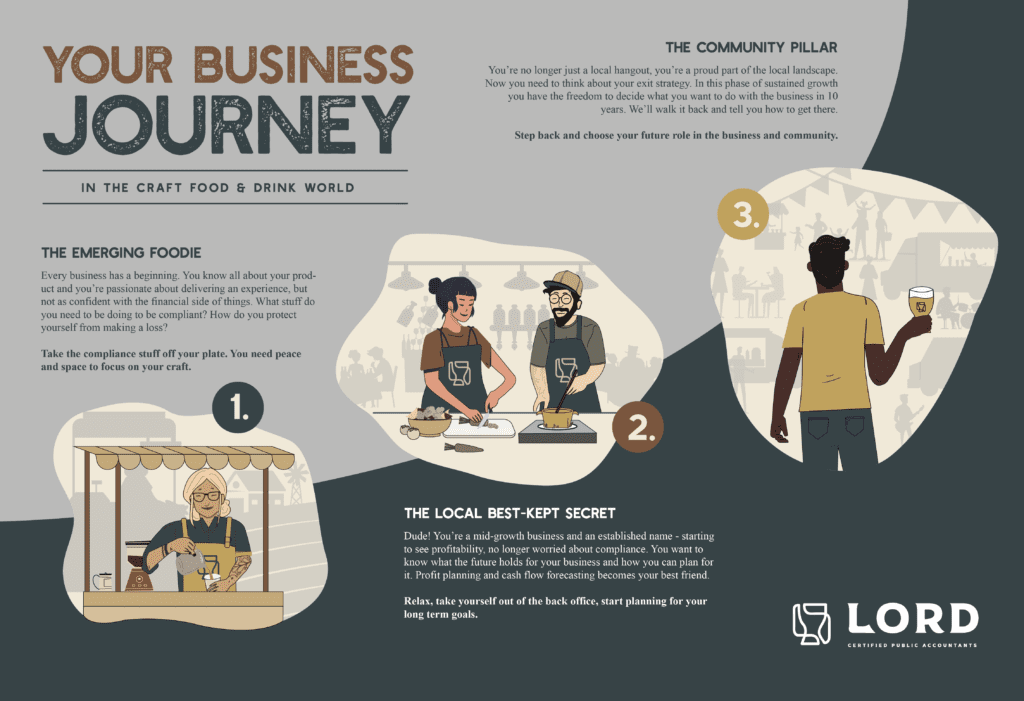When people visit your website, read your blogs and see your social posts, they get an impression of the personality of your firm and of the people within it.
This impression is formed in part by the visual elements of your brand – your logo, design, images, colours. And it is also influenced by your messaging – the words you share and the voice you present in your marketing.
Everything we say has the power to make people feel a certain way. If your parents ever told you to “watch your tone” you’ll know it’s not always what you say but how you say it that leaves a lingering impression. As American poet Maya Angelou famously said:
“??I’ve learned that people will forget what you said, people will forget what you did, but people will never forget how you made them feel.”
Words can be articulated (and therefore interpreted) in very different ways depending on your tone. Your website content, blogs, videos, social posts will already be making visitors feel a certain way. Are they getting the feelings you want them to?
Your tone of voice is an expression of your values
We run tone of voice sessions with our clients to help uncover and document their tone of voice so it’s consistent across online and offline communication.
The very first question we ask in one of these sessions is: do you have company values?
If you already have a solid set of lived-out values, you have the starting point for exploring and documenting your tone of voice. Your values are what you say as a firm, and the tone of voice is how you say it.
Values are everything when it comes to making decisions in your accounting firm. They are the foundational reminders of what you stand for and your behavioural compass. Here’s a blog to explain why your values must be lived out (from the heart). Most of our clients have some idea of their company values, even if they don’t have anything documented. If you have them, the blog will help you decide if they’re right for you. If your values feel vague, and nonspecific, a tone of voice session with PF can help you go deep to uncover what’s really important to you.
In a way, it’s a chicken and egg situation. Values determine tone of voice, but tone of voice can help you determine values. If you’re reading this without any idea whatsoever of your company values, thinking about how you want to come across in written communication will naturally encourage you to think more about your firm’s personality.
In a tone of voice session with Raedan, a PF client in the UK, Jonathan identified the need for a little humour on social media. The team likes to have a laugh, and fun is heavily incorporated in their values. Humour would be important in getting their character across online. That being said, another of their most important values is to be respectful. We explored how to be jokey and playful while still expressing the value of respect. What was and wasn’t acceptable? Where would the line be?
With these anchoring values, we were able to delve deep into all the nuances of language and communication and document an actionable tone of voice specific to Raedan.
This means everyone on the team has what they need, to help them to communicate in alignment with the Raedan brand when writing blogs for the firm or sharing posts on social media. Having a well defined tone of voice lends itself to better collaboration too. As Raedan’s marketing support, we’re able to help with content strategy and creation which sounds just like them, because we have guidelines for writing in their brand voice.
Your tone of voice builds trust through familiarity
The way you communicate online needs to match the way you communicate offline in order to build trust with your audience. Your prospects are doing the majority of their research online before they’re speaking to you in person – so when they eventually get to chat to your team on zoom or visit your office, you want them to think “they’re exactly who I thought they’d be!”.
It can feel too vague a direction to tell you to “be who you are” or “write like you speak” when it comes to your online communication. The way you speak when you’re texting your best mate about Love Island isn’t necessarily the way you would talk to a new lead. And yet, maybe it is!
We’re working with an accountant right now whose ideal audience is in the 18-25 age range. People in that age range might respond better to Whatsapp messages than to emails. They may appreciate abbreviations over “professional speak” (and certainly won’t want jargon). It builds trust when they see the kind of language they use every day, reflected back at them.
Writing in the same way you speak may come easy for a firm of one, but what if you have a team of 20? How do you make sure you’re all communicating in the same manner?
So “write like you speak” needs exploration and boundaries.
When we do this tone of voice exploration with our clients we ask:
“Imagine your firm as a person. What are they like and how do they communicate?”
We help them explore the character traits of their firm by visualising an in-person ambassador. It helps them think about all the verbal cues we use to express our personalities. The language we choose, mannerisms, sense of humour.
You can do this as a thought exercise now. If you were to pick a stranger from a line-up and prepare them to speak on behalf of your firm at an event, what direction would you give them?
You might tell your new brand ambassador things like:
- We’re very positive
- You can make jokes and be funny, but don’t push the line
- I don’t really swear in front of clients. Unless it’s Pete from the brewery…
- We don’t want to sound too formal and boring, so casual language is okay
This is the kind of direction your brand needs. When it’s explored and documented in even more detail, this will allow your team and marketing support to have an even greater understanding, enabling them to speak like you speak. Like the firm speaks.
These guidelines will allow them to step into your brand’s shoes every time they come to writing a piece of content. The style might be slightly different, person to person, because every human in your firm has their own personal voice. But they’ll have a universal tone of voice to reference back to. It’ll also give you the confidence (backed up by your guidelines) to share more of the marketing work.
This is the kind of direction your brand needs. When it’s explored and documented in even more detail, this will allow your team and marketing support to have an even greater understanding, enabling them to speak like you speak. Like the firm speaks.
These guidelines will allow them to step into your brand’s shoes every time they come to writing a piece of content. The style might be slightly different, person to person, because every human in your firm has their own personal voice. But they’ll have a universal tone of voice to reference back to. It’ll also give you the confidence (backed up by your guidelines) to share more of the marketing work.
To figure out your tone of voice, explore character, tone, and language preferences in detail – and document your findings
To start defining your own tone of voice, keep exploring the brand ambassador thought trail. We’ve created a tone of voice spreadsheet to give you a central place to workshop your answers.
- If your firm were a person, what character would they have?
Honest?
Authoritative?
Direct?
Humble?
Warm?
Thoughtful?
Helpful?
Professional?
Inspiring?
Cheeky?
Serious?
Positive?
- What kind of tone would they take?
Playful?
Respectful?
Sarcastic?
Enthusiastic?
Matter of fact?
Direct?
Emotional?
Unapologetic?
- What kind of language would they use?
Casual?
Non-technical?
Complex?
Simple?
Jargon-filled?
Jokey?
Insider/colloquial?
Get specific about your language preferences
The more specific you can be about the nuances of language, the better. You may have a wide range of cultures and ages within your firm, or amongst your marketing team. What is “normal” when it comes to swearing, slang and digital expression may vary.
- Will you use emojis?
- Will you use swear words? And to what level?
- Do you use any local/demographic slang to note?
- What are your forbidden words? Are there words you absolutely do not use (ex. PF we never use the word ‘should’ in our marketing)
You can document this beyond a list of brainstormed thoughts. Once you’re clear on your tone of voice, you can have it incorporated into your existing brand guidelines, or created as a standalone tone of voice guide. You could even create a unique web page like this one.
PF can help you come up with creative ideas of how to design and share these (not to mention design it for you) so you can empower and enable your real brand ambassadors.
Developing your own unique tone of voice guidelines solves the problem of “sounding like any other accountant”
I hear so many accountants say they don’t want to sound like a “traditional” accountant, or they don’t want to “just sound like everyone else”. You probably have a good idea of the impression you DON’T want to give your audience about who you are, which is a great jumping off point for exploring the alternative.
Remember, good marketing divides. Your website, brand, and marketing is not for you. They all exist, as does your accounting firm, for the people and businesses you serve. This means, as the expression of your brand’s personality, your tone of voice isn’t all about you either. When you explore this extension of the brand, the language you choose will connect with the kind of people you want to work with and turn away the people you don’t – double win!
In a meeting with Corey from Lord CPA, where we were talking through the content and design of a cornerstone piece of content, he mentioned he always calls his clients “dude”, regardless of gender. We incorporated this seemingly small personal preference into the client journey cornerstone we created below. You may not not do that – because you don’t like the word, it’s not used much colloquially, or some other reason. You might be reading this thinking I WOULD NEVER. That’s okay, That’s the whole point of making these distinctions.
This content detail, along with the on-brand design, speaks to the kinds of people Lord CPA loves to work with, in the kind of language they use and can expect to hear from Corey. Some people might feel like it’s unprofessional to be called a “dude” by their accountants, and hey – no drama! They’re not the kind of people Corey wants to attract.
This tone of voice exercise is a necessity to create content that resonates with your ideal clients and accurately represents the unique character of your firm.
When there’s a consistent tone of voice through every piece of content you share, you build an emotional connection with your audience much faster.
So – to dude or not to dude? That is the question. And then there are more questions, which we’ll explore and brainstorm and mull over with you in a tone of voice session.
Corey had a really good idea of who he wanted to target with his cornerstone design after exploring his brand in a foundations workshop with us. If your brand isn’t speaking to the people you want it to, take a step back first and book a foundations workshop. Once you’ve make a decision on who (specifically) you want your marketing to speak to, then we can get to the words.



